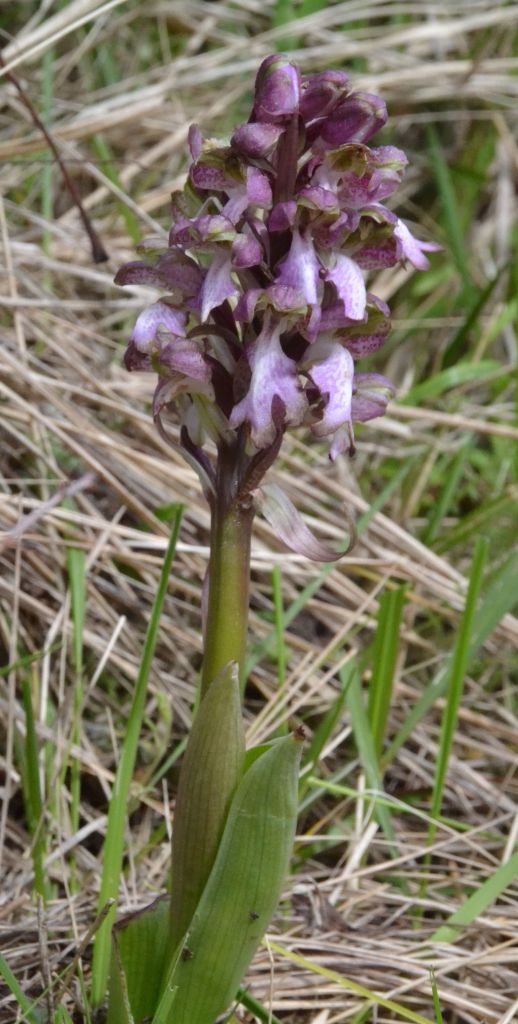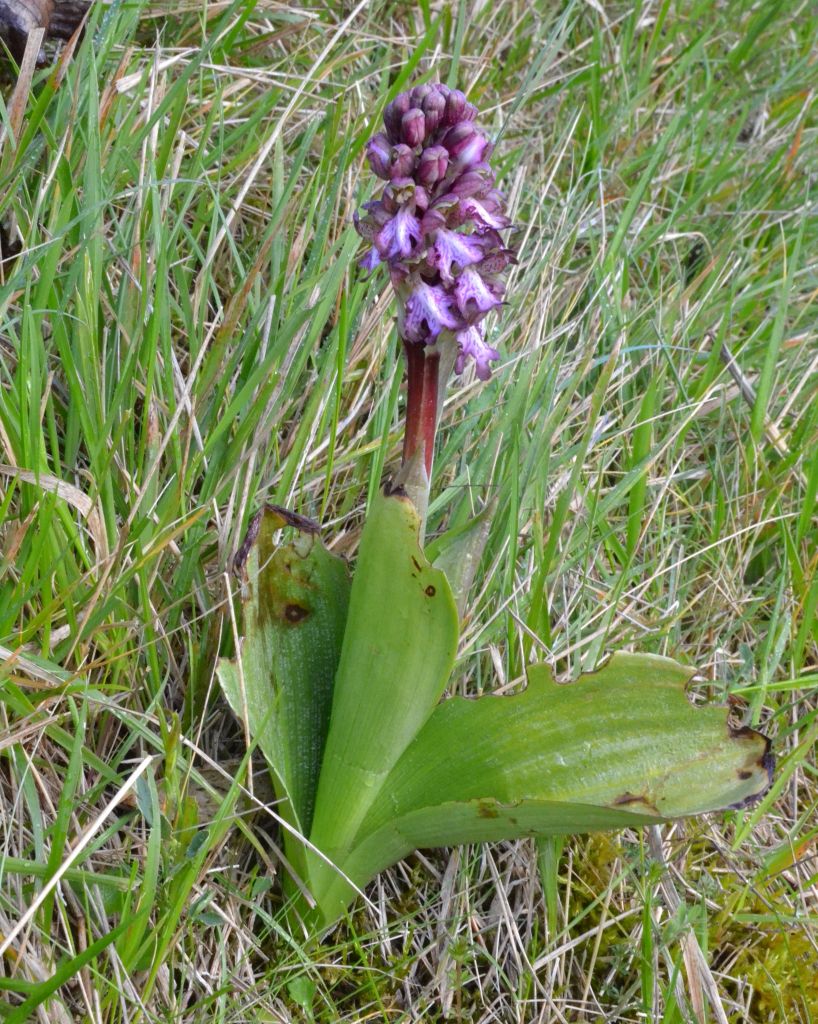Having for some time been receptive to learning more about Orchids, preferably with informed guidance, on being invited to a sneak preview of a rare Giant Orchid colony in my home county I accepted at once. What I didn’t realise until our second site visit was this is the only national location for the species, which is native to the Mediterranean region but has expanded its range as far as northern France with global warming.
The Oxon colony, then numbering nine flowering and 10 non-flowering plants, was discovered a year ago by a local non-botanist (see here) who nonetheless had an interest in Orchids and informed the relevant learned authorities. A national Orchid referee visited site to confirm the record and upon local enquiry established that specimens flowered here around 15 years ago but then disappeared again. It is not thought these occurred naturally but more likely through seed being scattered, as at certain locations in the Netherlands where the plant has become established. But it is now assumed the species has naturalised in southern England for the first time.
I myself had observed this Orchid once before in Provence in January 2016. It is one of the earliest flowering species in Europe and can live up to its name by reaching a metre in height. But none of the 2022 Oxon specimens was more than 30cm tall. We first visited on 17th March, finding just one emergent Giant Orchid, but on returning a week later found four specimens in bud or beginning to bloom (pictured below). March in Blighty has been an unrelentingly foul weather month, and after a sunny morning the grey, windy, wet stuff set in again when we reached site, as the images and possibly their subjects reflect.



Fast forward a week and word concerning this year’s blooming event had largely filtered through the Orchid grapevine. Though this location has not been made known in the public domain, those suitably connected in the Orchid world would by now be aware of the situation and an Orchid Society group had visited over the previous weekend. On our third call here there were at last sunny intervals and I was guided to an especially fine fifth specimen that had escaped our attention on those earlier visits. It was at a very slippery spot in the steeply sloping site, so gaining these next images required some care. But I managed not to take a tumble, unlike some of my six colleagues today.



A wet arse is of course greatly preferable to a broken ankle, and a hiking pole or shooting stick is essential here. Having attained these required studies I moved on to re-find last weeks specimens, three of which were still present and reasonably correct. The sequence below is for comparison with the earlier one in this post. If this becomes an established British colony then perhaps better picture opportunities may be available in future drier springs when these Orchids might have had less of a battering from the elements.


By agreement with my contacts I have not revealed this location herein. My understanding is limited site access is being arranged in the present season through appropriate channels, and the site details will be released more widely in due course.







